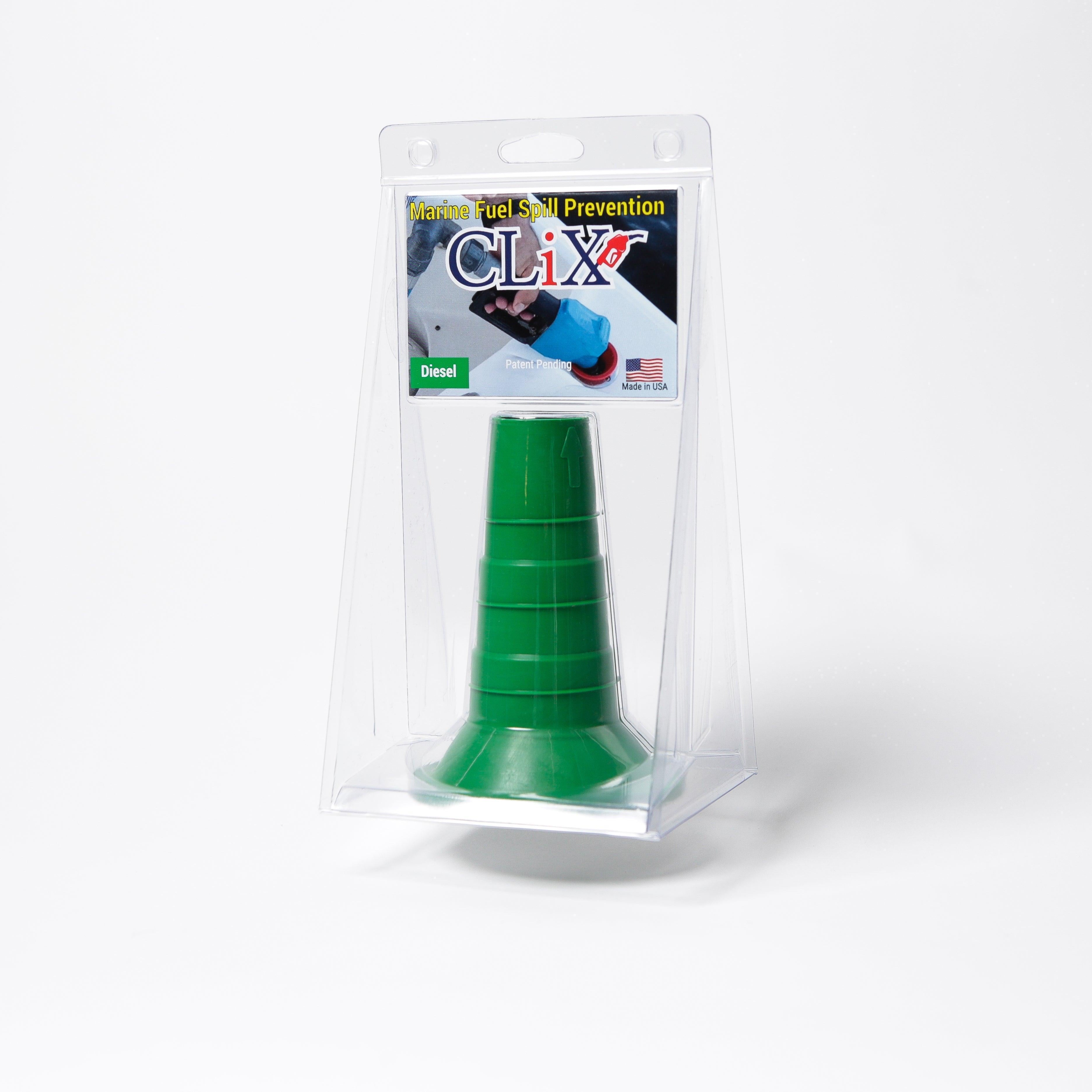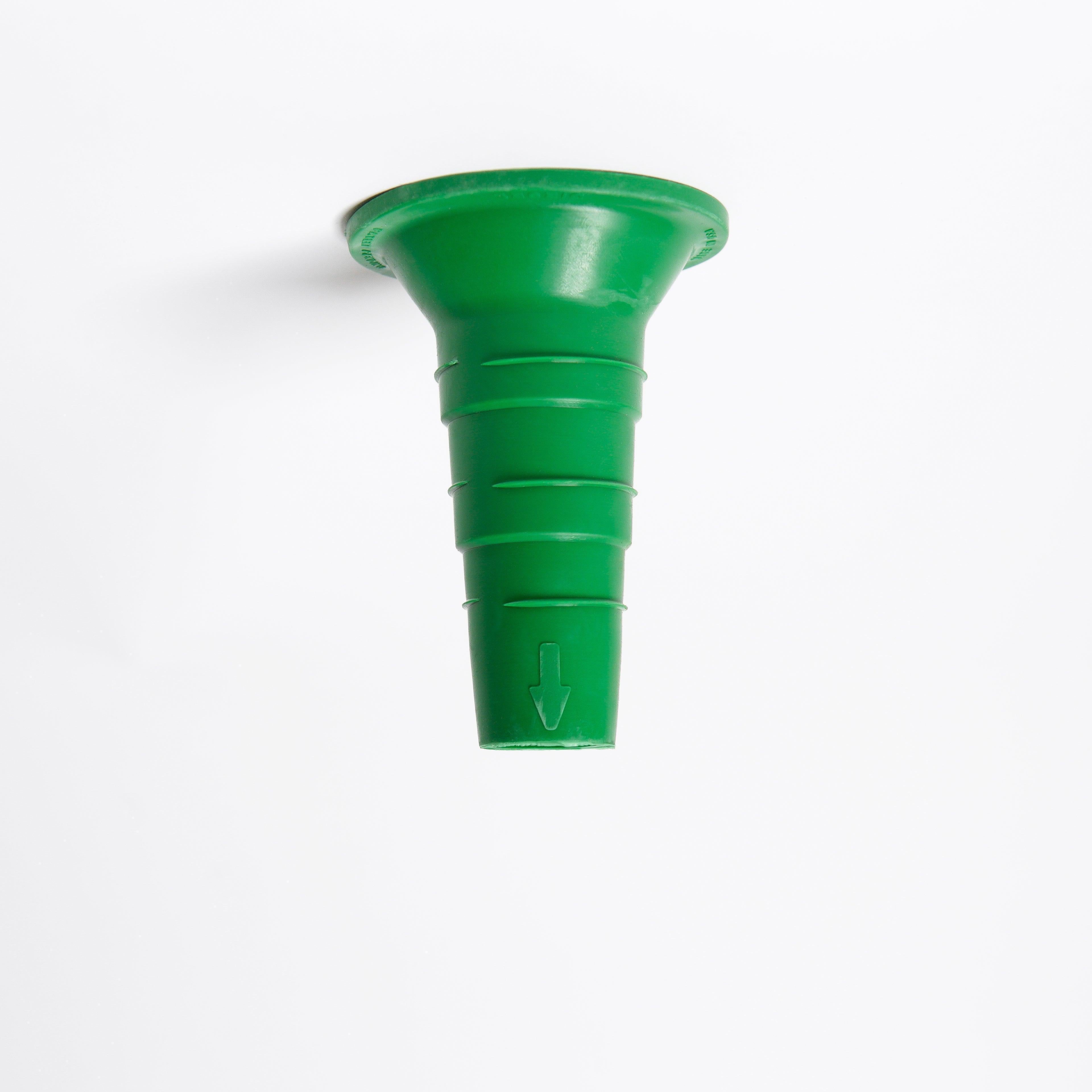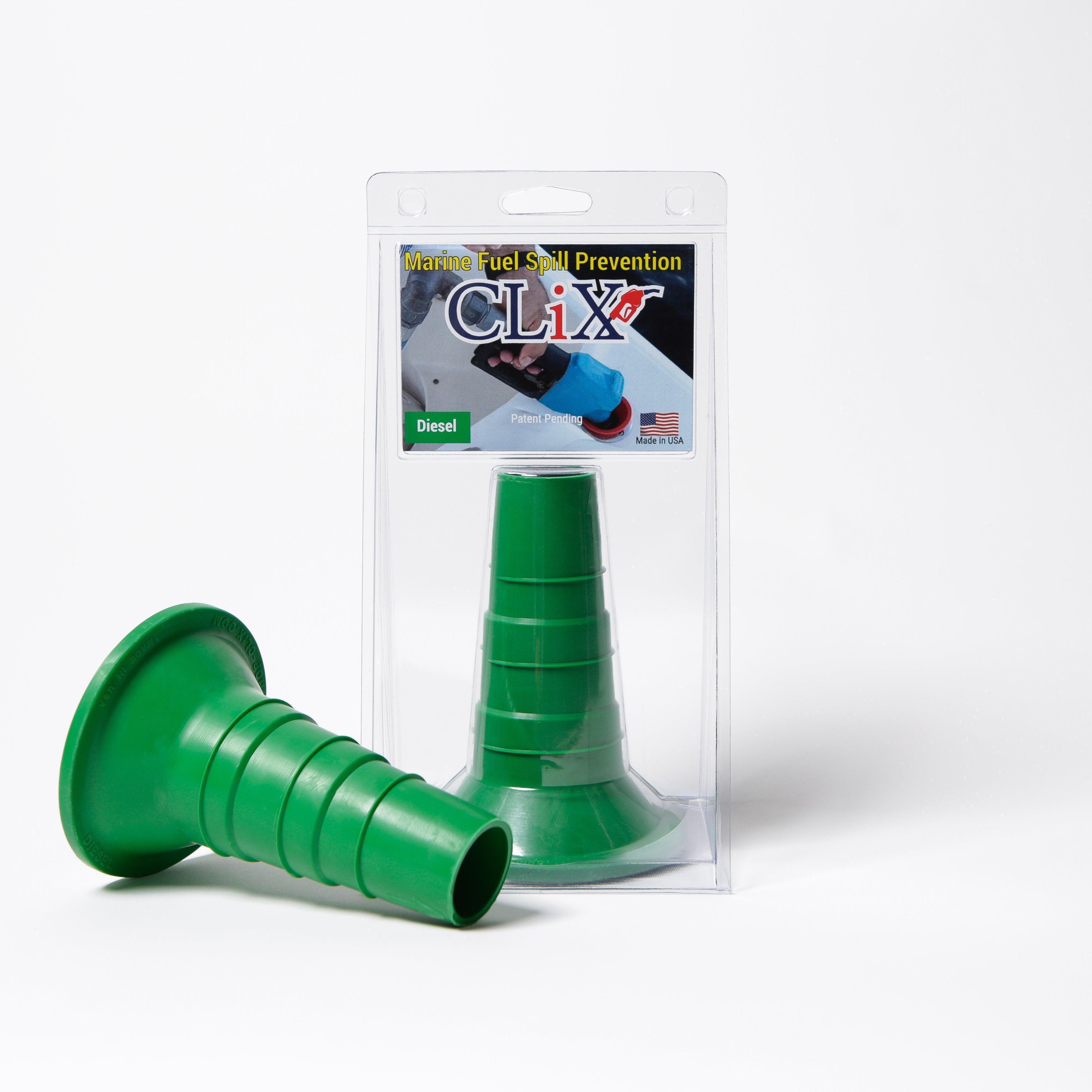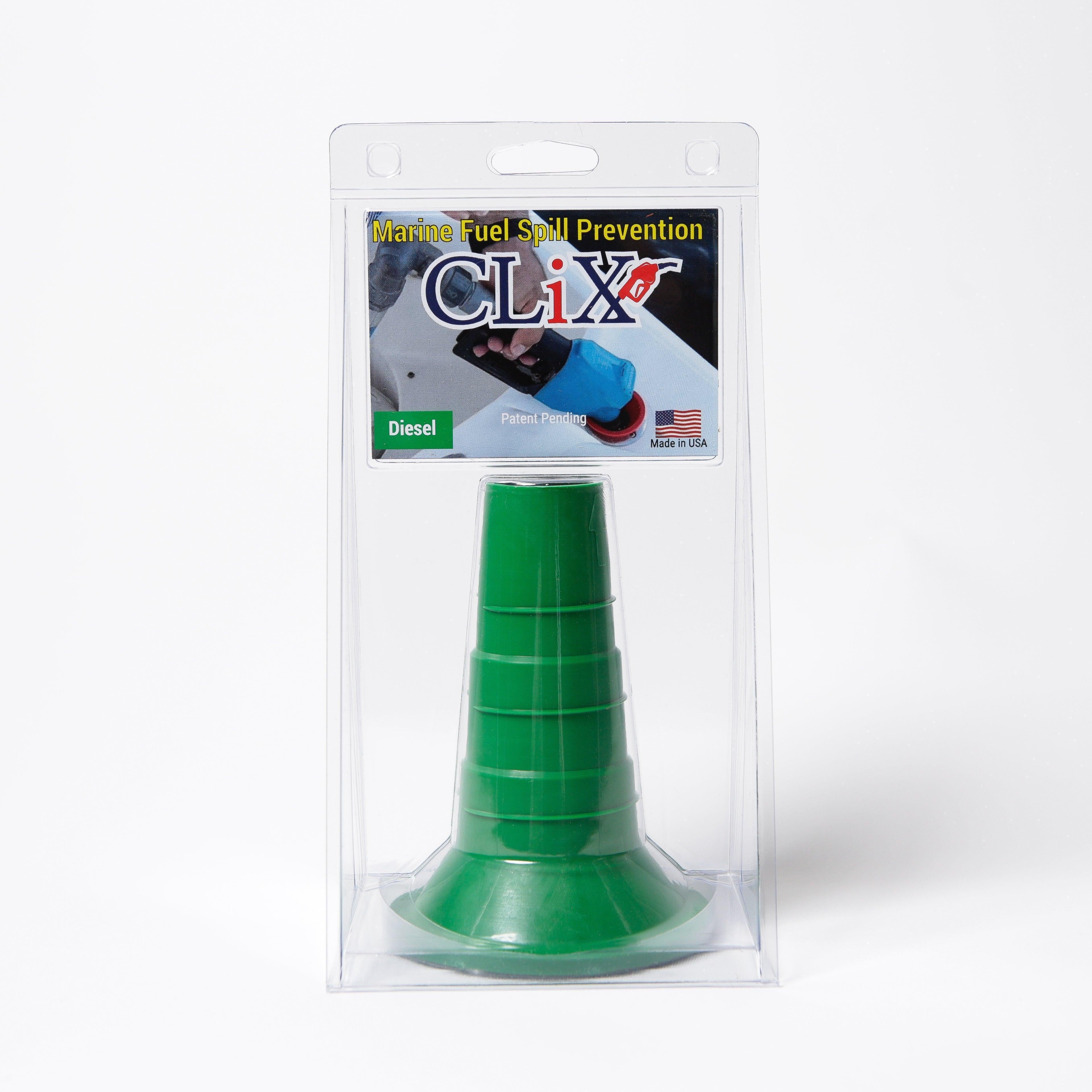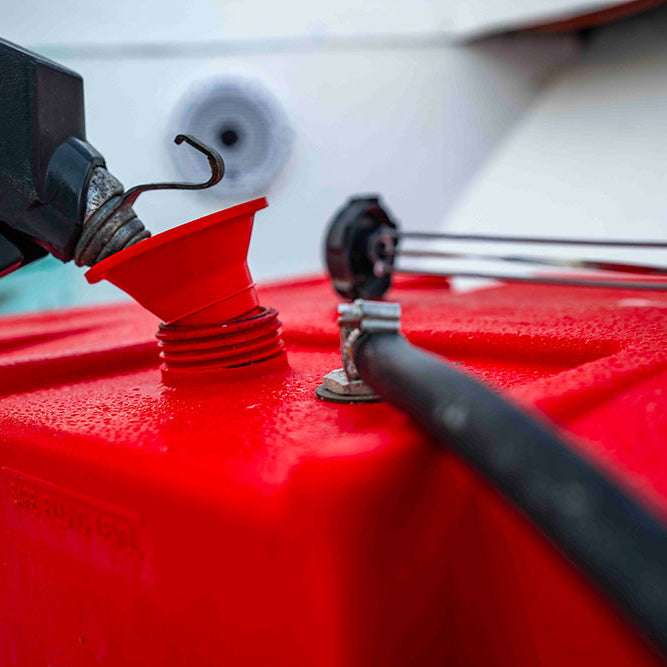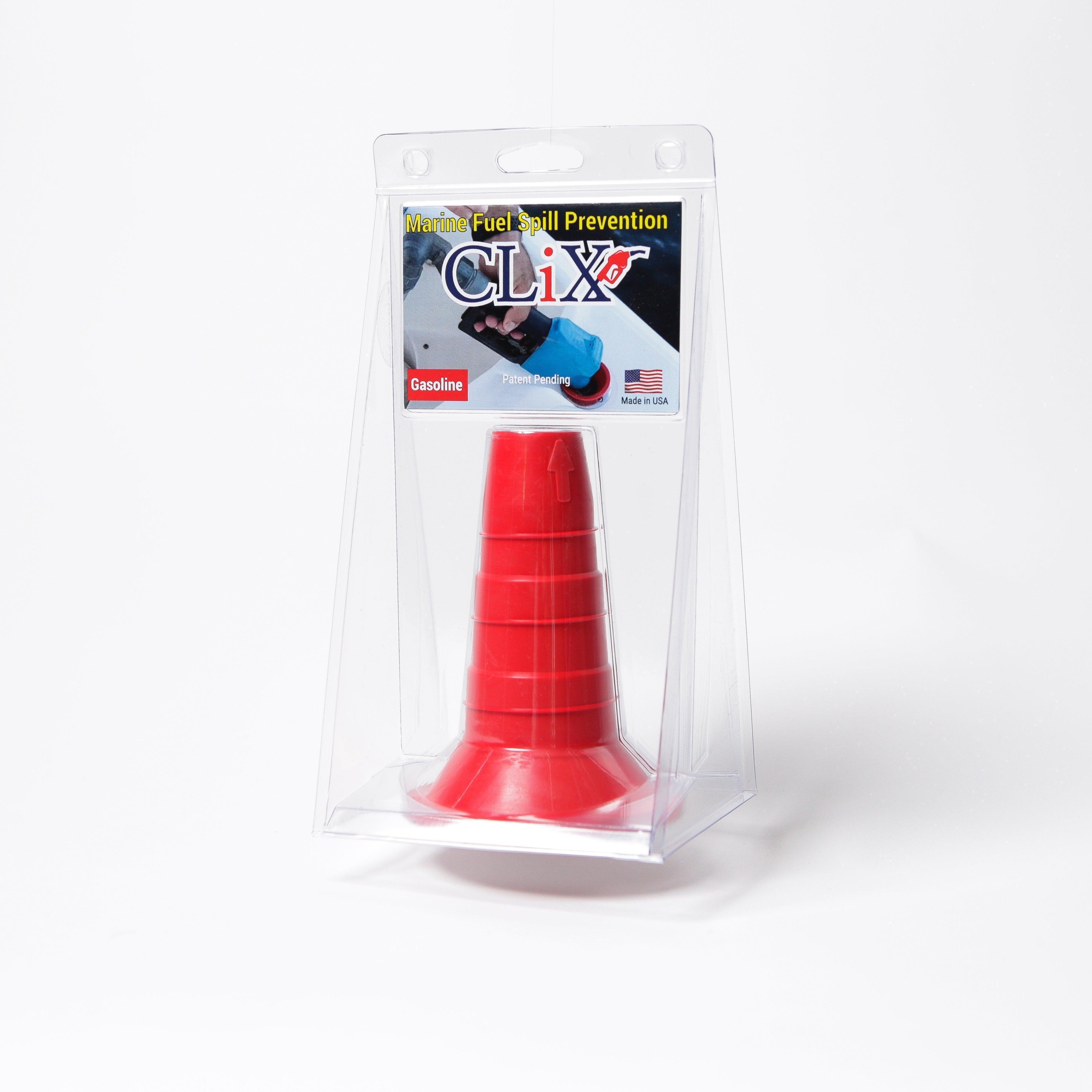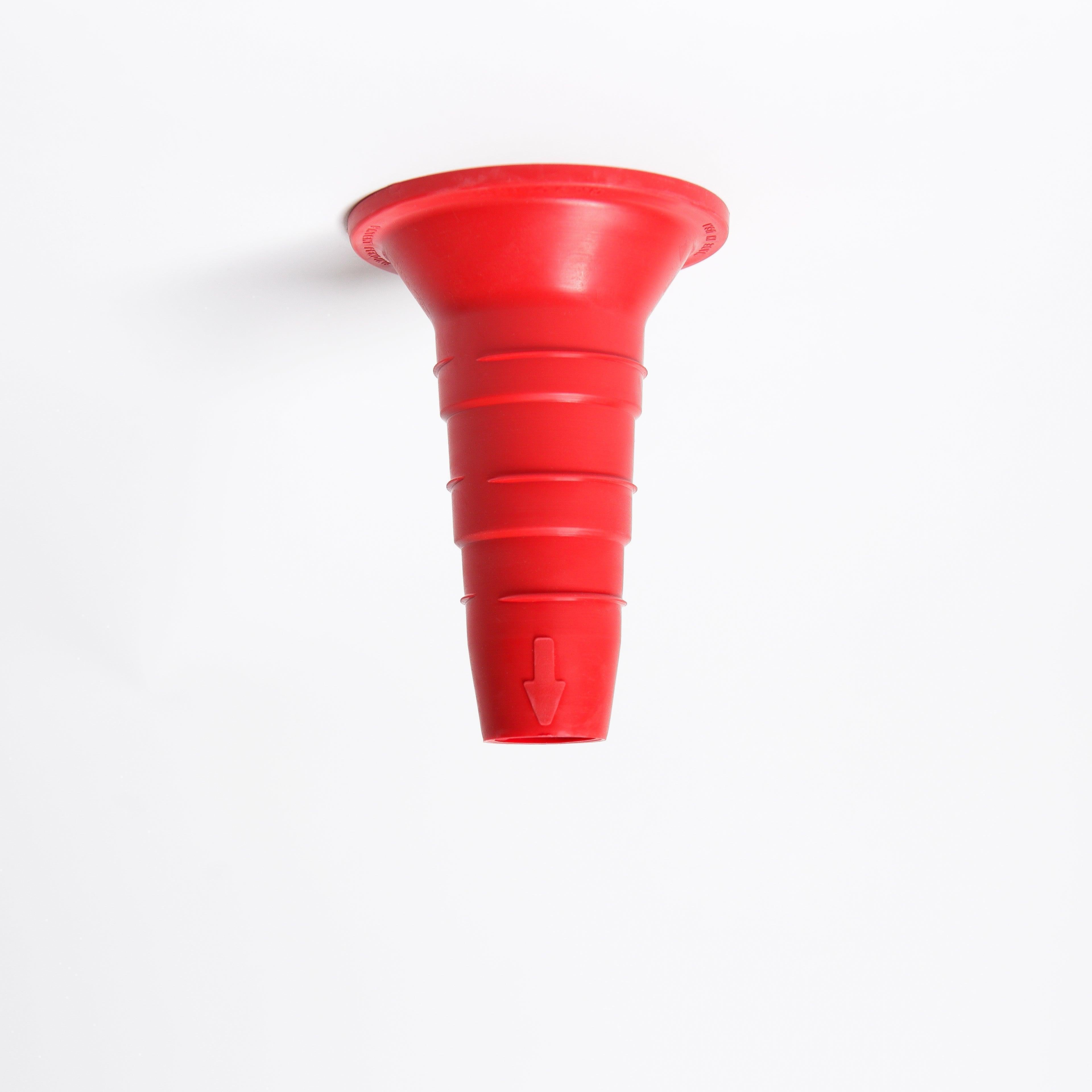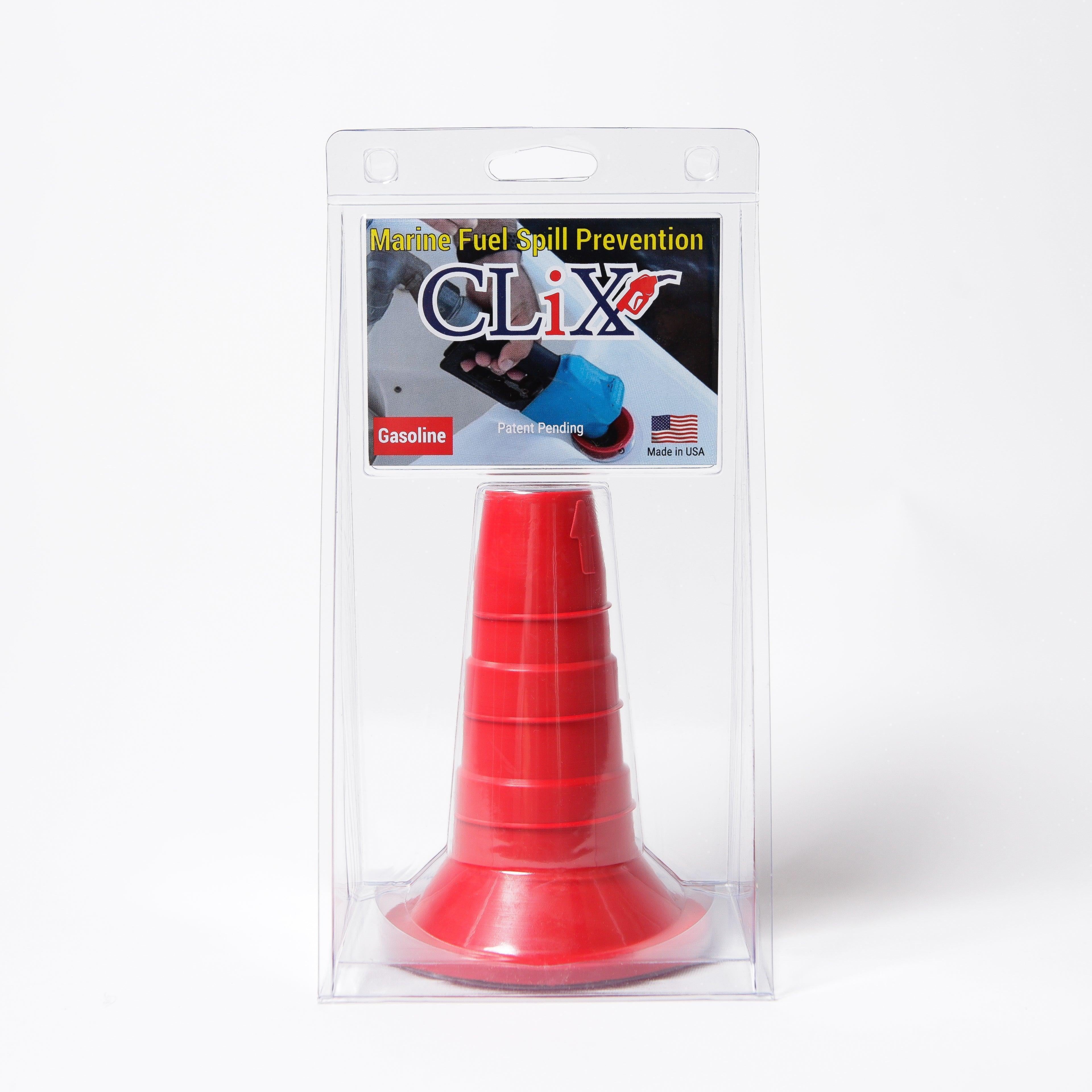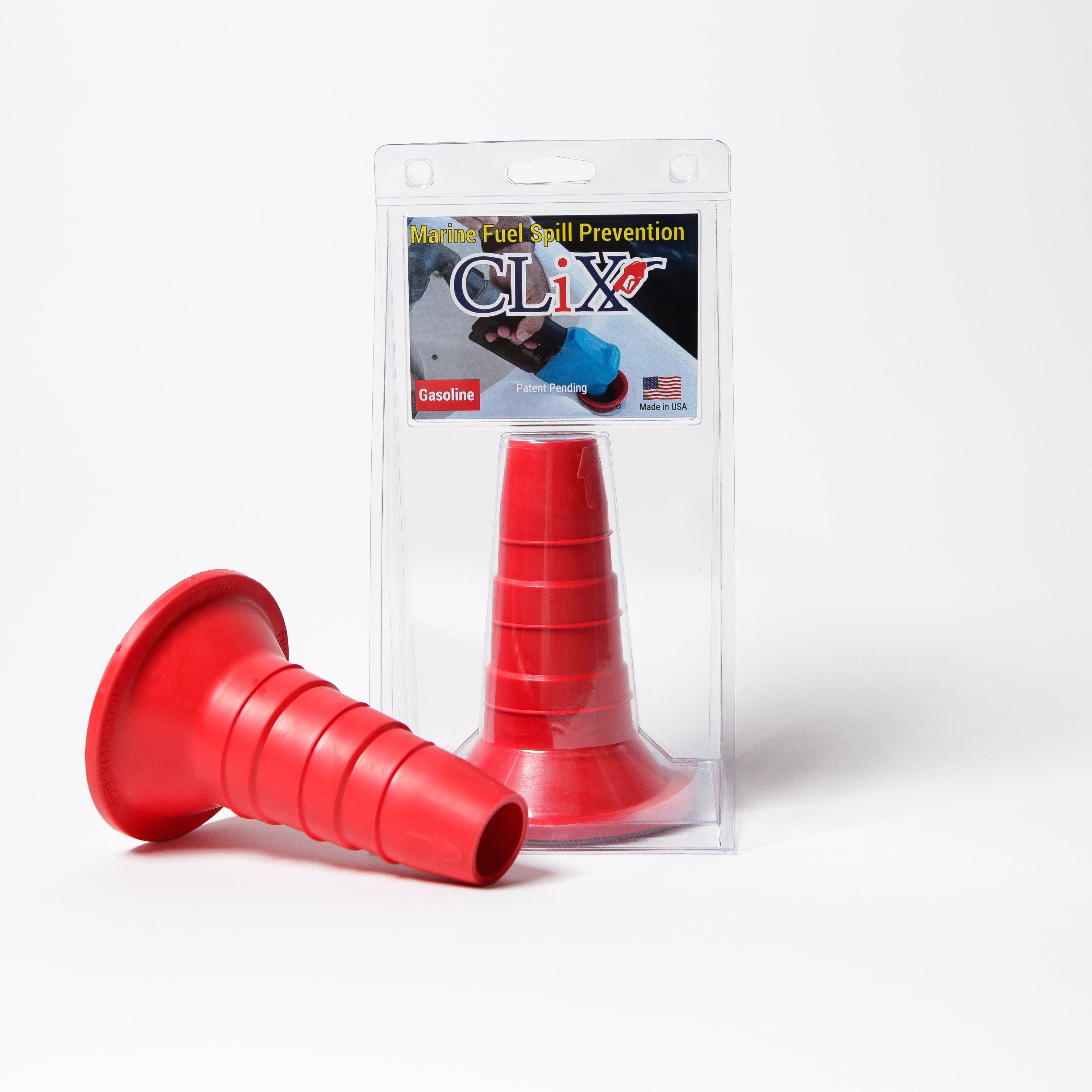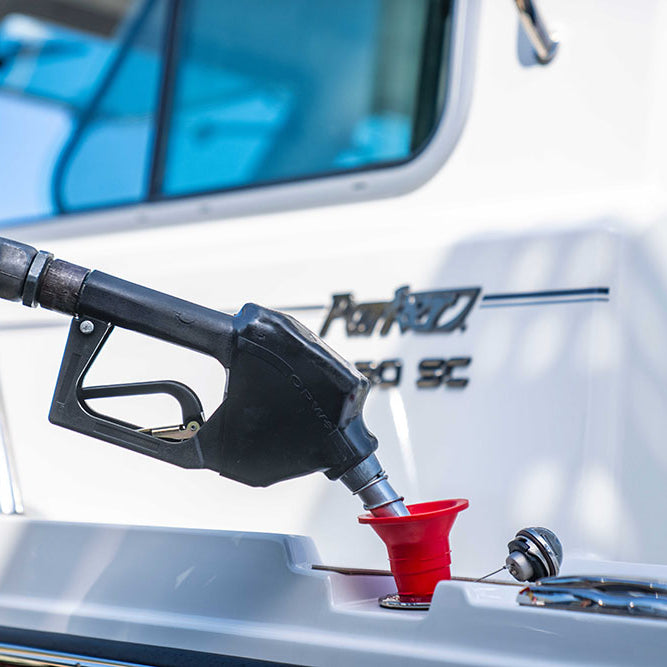Fueling Peace of Mind on the Water
Running out of fuel on the water is a serious safety risk. This listicle presents seven top-rated marine fuel gauges to keep you informed and safe, preventing unexpected fuel shortages. Discover the key features and benefits of each gauge, from the Garmin GMI 20 to the Murphy Marine PowerView PV411, and choose the perfect marine fuel gauge for your vessel. We'll also introduce CLiX Fueling Solutions to simplify fueling and protect the environment.
1. Garmin GMI 20 Marine Instrument Display
Keeping a close eye on your fuel levels is crucial for any boating enthusiast, from casual weekend sailors to professional fleet captains. A reliable marine fuel gauge is more than just a convenience; it's a vital piece of safety equipment. The Garmin GMI 20 Marine Instrument Display stands out among marine fuel gauges, offering much more than a simple fuel reading. It provides a comprehensive suite of information to enhance your boating experience and ensure peace of mind on the water. This sophisticated instrument delivers precise fuel data, integrates seamlessly with other Garmin marine electronics, and boasts a robust, weatherproof design, making it a top choice for serious boaters.
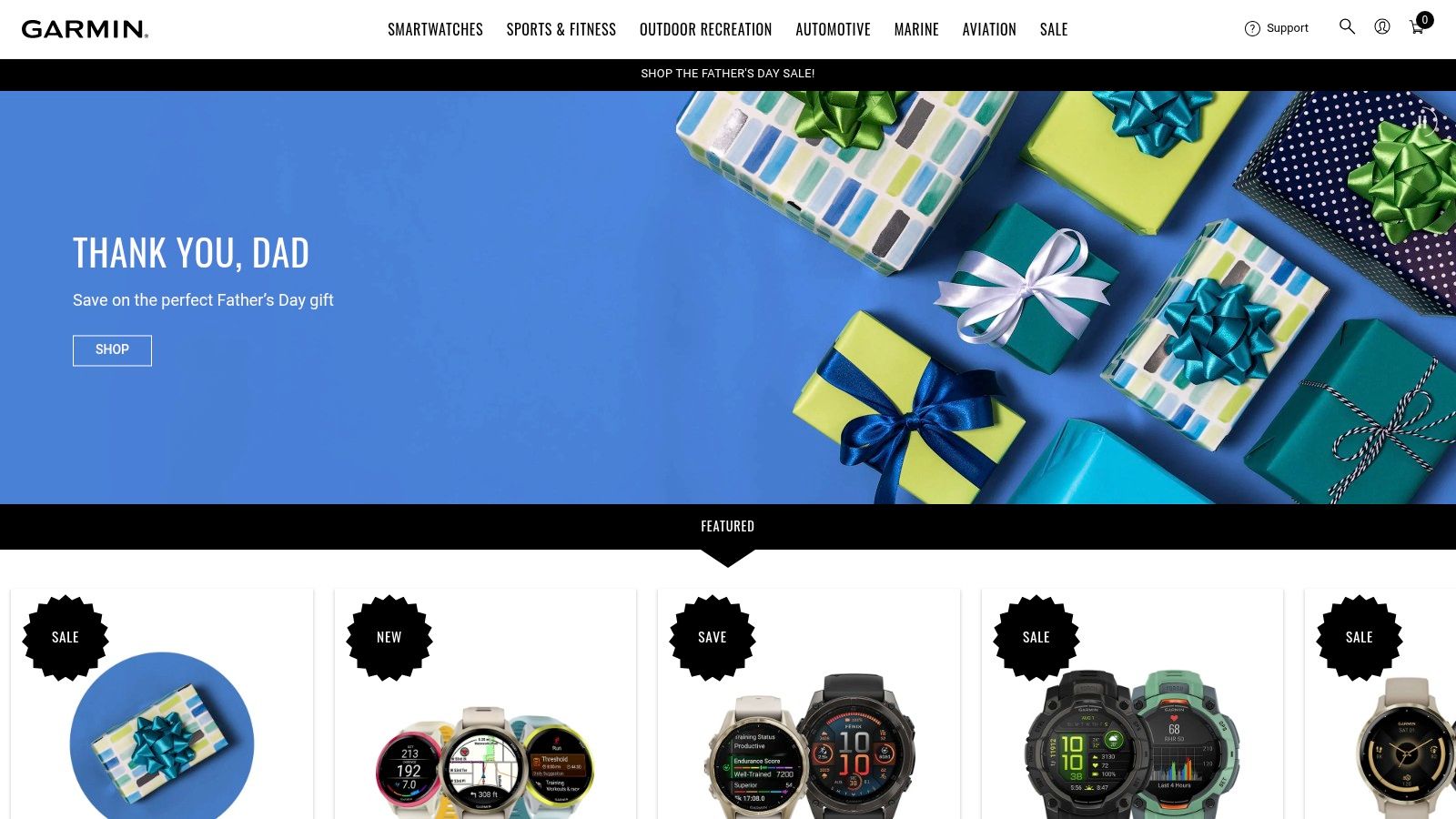
The Garmin GMI 20 is built around a vibrant, 4-inch color LCD display that’s easy to read even in direct sunlight. This is critical for accurate readings on the open water. The display is fully customizable, allowing you to configure the data fields to show the information most relevant to your needs. You can monitor fuel flow rate in real-time, track fuel economy to optimize your trips, and accurately estimate your remaining range based on current fuel levels and consumption. Knowing your precise fuel status empowers you to make informed decisions, avoiding potentially dangerous situations out at sea.
Beyond basic fuel monitoring, the GMI 20 shines through its integration with the Garmin marine network ecosystem. Using the NMEA 2000 standard, it seamlessly connects with other compatible Garmin devices, such as chartplotters, GPS units, and autopilots. This interconnectedness provides a holistic view of your vessel's performance and status, centralizing all critical information in one easily accessible location. For example, by integrating with your chartplotter, the GMI 20 can overlay fuel data onto your navigation charts, allowing you to plan your routes more efficiently and identify potential fuel stops along the way. You can Learn more about Garmin GMI 20 Marine Instrument Display to delve deeper into the benefits and features.
While the Garmin GMI 20 offers advanced features and unparalleled integration, it's essential to consider the technical requirements and potential drawbacks. The device requires a NMEA 2000 network for full functionality, meaning you might need to invest in additional hardware if your boat isn't already equipped. The initial setup can also be somewhat complex for beginners, potentially requiring professional installation or in-depth study of the user manual. Additionally, the GMI 20 sits at a higher price point compared to basic analog or simpler digital marine fuel gauges. However, for serious boaters and professionals, the enhanced features and reliability justify the investment.
For those looking to optimize their fuel efficiency and enhance their overall boating experience, the GMI 20 provides valuable data and insights. Features like customizable alarms and alerts can be configured to notify you of low fuel levels, high fuel consumption, or other critical events, adding an extra layer of safety. The IPX7 waterproof rating ensures the device can withstand harsh marine environments, offering reliable performance even in challenging conditions.
Implementation tips for the GMI 20 include carefully planning the placement of the display for optimal visibility and accessibility. Ensure the NMEA 2000 network is correctly configured and all connections are secure. Familiarize yourself with the customizable settings and tailor the display to your specific needs. While the initial setup may seem daunting, the long-term benefits of accurate fuel monitoring and seamless integration make the Garmin GMI 20 a valuable addition to any vessel. If you are looking for accurate, reliable, and comprehensive fuel monitoring combined with advanced integration capabilities, the Garmin GMI 20 is a premium choice amongst marine fuel gauges. While the price point may be higher than basic gauges, the peace of mind and enhanced functionality make it a worthwhile investment for serious boaters. You can find more information on the official Garmin website.
2. Lowrance Elite Fuel Flow System
The Lowrance Elite Fuel Flow System stands out among marine fuel gauges for its sophisticated blend of fuel management and navigation capabilities. More than just a simple gauge, it's a comprehensive system designed to provide boaters with precise fuel consumption data, accurate range estimations, and helpful navigational tools, all integrated into one user-friendly platform. This makes it a valuable asset for both recreational boaters looking to optimize their fuel efficiency and commercial operators seeking to manage fuel costs across a fleet.

Imagine this: you're out on the water, enjoying a day of fishing. With the Lowrance Elite Fuel Flow System, you can glance at your high-resolution color display and instantly see your real-time fuel consumption, fuel remaining, and estimated range. No more second-guessing or relying on unreliable manual calculations. The system's built-in GPS functionality adds another layer of precision, allowing for position-based fuel data and enhanced navigational accuracy. Knowing precisely how much fuel you have and how far you can travel offers peace of mind and allows you to focus on the enjoyment of your boating experience.
This system is equally beneficial for professional fleet captains. By accurately monitoring fuel consumption across multiple vessels, operators can identify inefficiencies, optimize routes, and significantly reduce fuel costs. The NMEA 2000 compatibility ensures seamless integration with other onboard electronics, creating a centralized hub for vital vessel information. The ability to track fuel usage per vessel also simplifies accounting and reporting processes.
For marina operators, offering fuel flow system installations as a service can attract and retain customers who prioritize efficient and responsible boating practices. Environmental advocates will also appreciate the system's contribution to fuel conservation, reducing the environmental impact of recreational and commercial boating.
While the Lowrance website doesn't list specific pricing, it's important to be aware that the Lowrance Elite Fuel Flow System typically sits at a higher price point than basic marine fuel gauges due to its advanced functionality and integration capabilities. Pricing will vary depending on the specific components chosen and the complexity of the installation. While a DIY approach might be tempting, professional installation is highly recommended for optimal performance and to ensure proper calibration and integration with your vessel's existing systems.
Setting up the system involves connecting the fuel flow sensor to the fuel line, linking the display unit to the boat's electrical system, and configuring the software to match your specific engine and tank setup. While the basic operation is user-friendly, understanding the advanced features, like custom fuel curves and data logging, might require some time and exploration. The learning curve is relatively manageable, and the benefits of mastering these features are well worth the effort.
Compared to simpler marine fuel gauges, the Lowrance Elite Fuel Flow System offers a significant leap in terms of accuracy and functionality. While basic gauges might provide a rough estimate of fuel level, they lack the real-time flow data, range calculations, and GPS integration that make the Lowrance system so valuable. If you prioritize accurate fuel management, enhanced navigation, and seamless integration with other onboard electronics, the Lowrance Elite Fuel Flow System deserves its place among the top considerations for marine fuel gauges. You can explore further details and specifications on the official Lowrance website. Remember, investing in a reliable fuel management system not only enhances your boating experience but also promotes responsible and efficient use of resources.
3. Maretron FFM100 Fuel Flow Monitor
For boat owners seeking the utmost precision in fuel monitoring, the Maretron FFM100 Fuel Flow Monitor stands out as a top contender among marine fuel gauges. This device isn't just a gauge; it's a sophisticated system designed to provide highly accurate fuel consumption data, enabling you to optimize efficiency, manage costs, and extend your vessel's range. Whether you're a recreational boater, a professional fleet captain, or a marina operator, the FFM100 offers a level of control and insight that traditional fuel gauges simply can't match. This precision makes it particularly appealing to those focused on fuel efficiency and reducing their environmental impact.
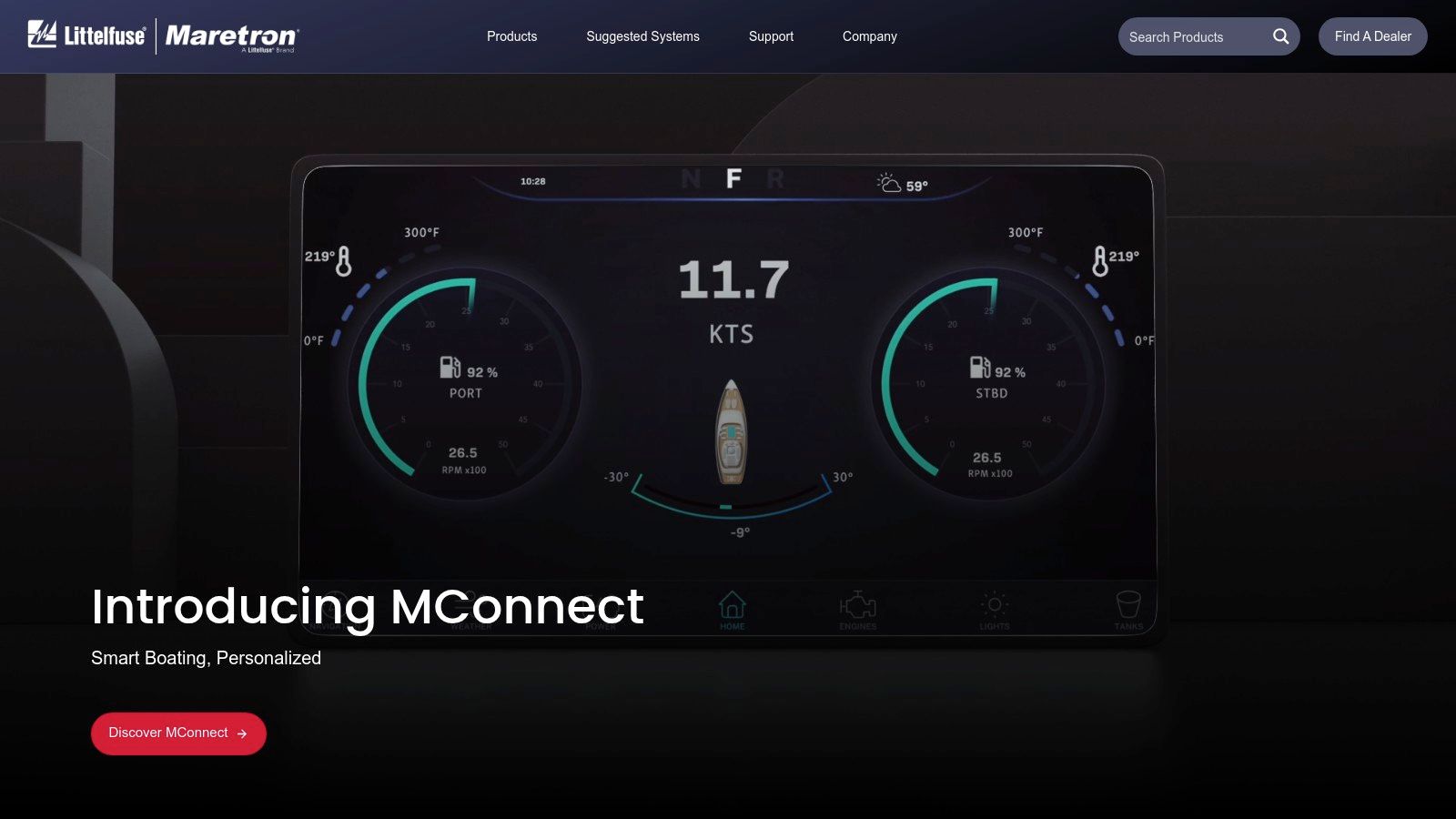
The Maretron FFM100’s core strength lies in its high-precision fuel flow measurement. Unlike traditional float-based gauges that are prone to inaccuracies due to fuel sloshing and tank shape, the FFM100 employs advanced flow sensor technology to provide real-time, accurate fuel consumption data regardless of sea conditions. This accuracy translates to better fuel management, allowing boaters to accurately calculate fuel burn rates, optimize cruising speeds for maximum efficiency, and accurately estimate remaining range. This is invaluable for anglers making long runs offshore, sailors planning extended voyages, or commercial operators looking to minimize fuel expenses. For the environmentally conscious boater, precise fuel consumption data can help identify inefficiencies and reduce their overall carbon footprint. Learn more about Maretron FFM100 Fuel Flow Monitor for further insights into how accurate fuel readings can benefit your boating experience.
One key feature that sets the FFM100 apart is its dual engine monitoring capability. Owners of twin-engine vessels can monitor the fuel flow of each engine independently, providing granular data for performance comparisons and troubleshooting. This feature is especially beneficial for commercial operators and serious sportfishing enthusiasts who rely on optimal engine performance. Identifying discrepancies in fuel consumption between engines can point to potential mechanical issues, allowing for proactive maintenance and preventing costly repairs.
Integration with Maretron's N2KView software further enhances the FFM100's functionality. This comprehensive vessel monitoring software allows you to visualize fuel consumption data alongside other critical engine parameters, providing a holistic view of your vessel's performance. The data logging capabilities of N2KView also enable long-term trend analysis, allowing you to track fuel efficiency over time and identify potential issues before they become major problems. This level of data analysis can be invaluable for optimizing fuel efficiency and predictive maintenance.
While the Maretron FFM100 offers significant advantages, it's essential to consider its limitations. The device requires technical expertise for installation and integration into the NMEA 2000 network. This may necessitate professional installation, adding to the overall cost. Furthermore, the FFM100 has limited standalone functionality. It requires a compatible NMEA 2000 display or computer running N2KView to visualize the fuel flow data. Finally, the FFM100 comes at a premium price point compared to more basic marine fuel gauges. While pricing can vary, expect to invest significantly more for the advanced capabilities and precision offered by the FFM100.
Despite the higher price and installation complexity, the Maretron FFM100 justifies its cost for those who demand the most accurate and detailed fuel consumption data. Its robust construction, built to commercial marine standards, ensures reliability in demanding marine environments. For boat owners who prioritize fuel efficiency, precise engine management, and data-driven decision-making, the FFM100 represents a valuable investment that can pay dividends in the long run. For those seeking the ultimate in marine fuel gauges, the Maretron FFM100 delivers a level of precision and functionality that sets it apart.
4. Raymarine i70s Multifunction Display
The Raymarine i70s Multifunction Display earns its place on this list of top marine fuel gauges not just for its fuel monitoring capabilities, but for its versatility as a central information hub on your vessel. While dedicated marine fuel gauges provide a singular focus, the i70s offers a broader approach, integrating fuel data with other crucial navigation and vessel information, making it an attractive option for boaters seeking a comprehensive solution. This makes it particularly appealing to recreational boat owners, anglers, sailors, and anyone who values having a clear, concise overview of their boat’s performance and status at a glance.
Beyond simply displaying fuel levels, the i70s gives you a deep dive into your fuel consumption. You can monitor multiple fuel parameters simultaneously, such as fuel flow rate, fuel remaining, and even estimated range based on current consumption. This level of detail is invaluable for efficient trip planning and can help prevent unexpectedly running dry, a nightmare scenario for any boater. Imagine being able to accurately estimate your fuel needs for a fishing trip based on your usual cruising speed and planned route – the i70s makes this possible. For professional fleet captains, this granular data translates to improved operational efficiency and cost savings by optimizing fuel consumption across their fleet. Even marina operators can benefit from this technology by offering more precise fuel sales and tracking.
One of the standout features of the i70s is its large, bright color LCD display. Information is presented clearly and is easily customizable. You can configure the display to show exactly the information you need, in the layout you prefer. Whether you prioritize fuel data, navigation information, or engine parameters, the i70s allows you to tailor the display to your specific boating style and requirements. This customizable layout is a significant advantage, especially in challenging conditions where quick access to critical data is paramount.
The i70s is built to withstand the harsh marine environment. Its waterproof design (IPX6/IPX7 rated) ensures reliable operation even in heavy seas and rain. The robust build quality is further reinforced by the combination of a rotary dial and keypad control, providing a tactile and intuitive interface even with wet hands or in rough conditions. This ruggedness is essential for any marine electronics and contributes to the overall reliability and longevity of the device.
Seamless integration is another key strength of the Raymarine i70s. It connects effortlessly with SeaTalkng and NMEA 2000 networks, allowing it to communicate with other onboard systems and sensors. This integration unlocks the full potential of the i70s, transforming it from a standalone display into a powerful information hub. You can connect it to your chartplotter, autopilot, engine gauges, and other instruments, creating a cohesive and centralized system for managing your vessel. This network integration is particularly beneficial for larger vessels and professional applications where multiple systems need to work together seamlessly.
While the i70s excels in many areas, it’s important to acknowledge its limitations. The display, while large for an instrument display, is smaller than dedicated chartplotters. Therefore, if detailed chart plotting is your primary need, a dedicated chartplotter would be a better choice. The i70s also has limited standalone capabilities. To unlock its full potential, integration with a SeaTalkng or NMEA 2000 network is required.
Pricing for the Raymarine i70s typically falls in the mid-range for marine electronics, offering good value for the multi-functionality it provides. While specific pricing can vary depending on retailer and bundled options, it generally competes favorably with other multifunction displays on the market.
Implementation is straightforward. The i70s can be surface or flush mounted, depending on your boat’s layout and aesthetics. Connecting it to your existing SeaTalkng or NMEA 2000 network is usually a plug-and-play process. However, consulting a professional marine electronics installer is always recommended for complex installations or if you are unsure about any aspect of the process.
Overall, the Raymarine i70s Multifunction Display is a powerful and versatile tool that goes beyond basic marine fuel gauge functionality. It’s a valuable addition for any boater seeking a centralized information hub, offering detailed fuel monitoring alongside a range of other features, all packaged in a robust and user-friendly design. For more information and detailed specifications, visit the Raymarine website: https://www.raymarine.com
5. Simrad IS42 Fuel Display
The Simrad IS42 Fuel Display secures its spot on this list as a reliable and compact solution for monitoring fuel consumption on your vessel. Specifically designed for the marine environment, the IS42 provides crucial fuel data at a glance, empowering you to make informed decisions about your boating activities. Whether you're a recreational boat owner looking to optimize fuel efficiency for weekend trips, or a professional fleet captain managing fuel costs across multiple vessels, the IS42 offers a straightforward approach to fuel management. Its straightforward design and integration capabilities make it a valuable tool for anyone seeking greater control over their fuel usage.

One of the standout features of the Simrad IS42 is its high-contrast segmented display. This ensures excellent readability, even in direct sunlight or challenging lighting conditions often encountered on the water. This is a critical feature for marine fuel gauges, as quick and accurate readings are essential for safe and efficient operation. The display presents information such as fuel flow (gallons or liters per hour), fuel used (total consumption), fuel remaining (in tank), and even fuel economy data, allowing you to fine-tune your cruising speed for optimal range. The compact design of the IS42 is another significant advantage, making it an excellent choice for smaller vessels where dash space is limited. This allows you to integrate crucial fuel monitoring capabilities without sacrificing valuable real estate on your control panel.
The Simrad IS42 seamlessly integrates with Simrad's broader marine electronics ecosystem via NMEA 2000 connectivity. This allows the IS42 to receive data from compatible fuel sensors and other onboard systems, providing a centralized hub for monitoring vessel performance. This level of integration is particularly beneficial for boaters already using Simrad equipment, creating a unified and streamlined experience. For those interested in exploring broader fuel management strategies, learn more about Simrad IS42 Fuel Display and other advanced systems.
While the Simrad IS42 offers a robust solution for basic fuel monitoring, it's important to note that it does not offer the advanced features found in more sophisticated fuel management systems. It focuses primarily on displaying core fuel parameters and doesn't include functions like tank level alarms, detailed historical data logging, or fuel theft detection. The monochrome display, while highly readable, is also a limitation for users who prefer the visual appeal and data richness of a color display. Finally, it’s important to understand that the IS42 requires separate fuel flow and level sensors for full functionality. These sensors are typically sold separately and should be factored into the overall cost of installation.
Implementing the Simrad IS42 typically involves connecting it to the NMEA 2000 network and configuring the display through a compatible Simrad chartplotter or multifunction display. The installation process, though relatively straightforward, might require professional assistance depending on your existing electronics setup. While pricing can vary depending on retailer and region, the Simrad IS42 typically falls within a mid-range price point for marine fuel gauges, offering a good balance of functionality and affordability. You can find more details on their website: https://www.simrad-yachting.com.
For boaters seeking a dependable, easy-to-read marine fuel gauge, the Simrad IS42 provides a compelling option. Its compact design, robust construction, and seamless integration with Simrad systems make it a valuable addition to any vessel, offering essential fuel data for informed decision-making on the water. While it may not offer the advanced features of more complex systems, its core functionality and reliable performance make it a worthy contender in the realm of marine fuel gauges.
6. Floscan Series 200 Fuel Flow System
For boat owners seeking a comprehensive and reliable solution for monitoring fuel consumption, the Floscan Series 200 Fuel Flow System stands out as a robust and accurate choice among marine fuel gauges. This system goes beyond simple fuel level readings, providing a detailed picture of fuel usage, allowing for better trip planning, improved engine efficiency monitoring, and ultimately, cost savings. This makes it a worthwhile investment for anyone serious about managing their fuel budget and maximizing their time on the water.
The Floscan Series 200 isn't just a fuel gauge; it's a complete fuel management system. It includes both the precision fuel flow sensors and a digital display unit, offering a packaged solution for monitoring real-time fuel consumption, calculating remaining fuel, and even tracking engine efficiency. Unlike basic marine fuel gauges that simply indicate the level in the tank, the Floscan 200 provides dynamic data on how quickly fuel is being consumed, allowing boaters to adjust their speed and throttle to optimize fuel economy. This feature is invaluable for long trips or when navigating uncertain fuel availability.
One of the key advantages of the Floscan Series 200 is its accuracy. The system utilizes precision flow sensors, delivering highly reliable fuel measurements, critical for accurate fuel remaining calculations. Knowing precisely how much fuel is left eliminates the guesswork and reduces the risk of running out of fuel, a situation that can be both inconvenient and dangerous, particularly in offshore situations. The system’s compatibility with both gasoline and diesel engines broadens its appeal to a wider range of boat owners, from recreational anglers to professional fishing charters.
The Floscan Series 200 is designed with the harsh marine environment in mind. Built for durability, it has a proven track record of reliability in marine applications, withstanding the vibrations, temperature fluctuations, and moisture exposure common in boating. This robust construction contributes to its long-term performance and minimizes the need for replacements, further justifying the initial investment. While precise pricing can vary based on configuration and retailer, the Floscan 200 typically falls in a higher price bracket compared to simpler marine fuel gauges, reflecting its comprehensive features and rugged build. It’s important to factor in potential additional costs for multi-engine installations, as each engine requires its own sensor.
Practical Applications and Use Cases:
The Floscan Series 200 is ideal for a variety of boating scenarios:
- Long-Distance Cruising: Accurate fuel remaining calculations are essential for extended trips, allowing boaters to plan fuel stops and avoid running dry.
- Fishing Charters: Monitoring fuel consumption helps optimize profitability by managing operating costs and maximizing time on the fishing grounds.
- Commercial Vessels: Accurate fuel data aids in cost control and efficient fleet management.
- Performance Boating: Real-time fuel flow data allows boaters to fine-tune their performance and optimize fuel efficiency at different speeds.
- Environmental Awareness: Understanding and managing fuel consumption contributes to reducing a boat's environmental impact.
Installation and Setup:
While professional installation is always recommended, the Floscan Series 200 is designed for relatively straightforward installation. The system is self-contained, minimizing external dependencies and simplifying the setup process. Typically, installation involves mounting the flow sensor in the fuel line, connecting the wiring harness to the display unit, and calibrating the system. Detailed instructions are provided by Floscan to guide users through the installation process.
Pros and Cons:
Pros:
- Complete system with sensors included.
- Highly accurate fuel measurements.
- Proven reliability in marine applications.
- Relatively simple installation.
- Supports both gasoline and diesel engines.
Cons:
- Limited integration with other marine electronics.
- Basic display compared to some modern color units.
- Higher cost for multi-engine installations.
Comparison with Similar Tools:
While other fuel flow meters exist on the market, the Floscan Series 200 distinguishes itself through its combination of accuracy, durability, and comprehensive features. Some competitors might offer more advanced display features or integration capabilities, but they may not match the Floscan's proven reliability in the marine environment. For boaters prioritizing accurate fuel management and long-term durability, the Floscan 200 remains a strong contender.
Website: https://www.floscan.com
The Floscan Series 200 is a powerful tool for managing fuel consumption and enhancing the boating experience. Its accurate measurements, robust design, and comprehensive data provide boaters with the information they need to optimize fuel efficiency, extend their range, and enjoy greater peace of mind on the water. While the investment might be higher than basic marine fuel gauges, the long-term benefits in terms of cost savings, improved efficiency, and enhanced safety make it a valuable addition for serious boaters.
7. Murphy Marine PowerView PV411 Display
The Murphy Marine PowerView PV411 Display distinguishes itself from basic marine fuel gauges by offering a comprehensive, integrated system for monitoring fuel consumption and engine performance. This sophisticated system goes beyond simply indicating how much fuel is left in the tank; it provides a detailed overview of fuel flow rates, consumption across multiple tanks and engines, and a robust alarm system to alert you to potential issues. This makes it ideal for anyone from recreational boat owners seeking enhanced fuel management to professional fleet captains demanding precise fuel data. This advanced functionality justifies its place on this list as a top-tier solution for comprehensive fuel monitoring.
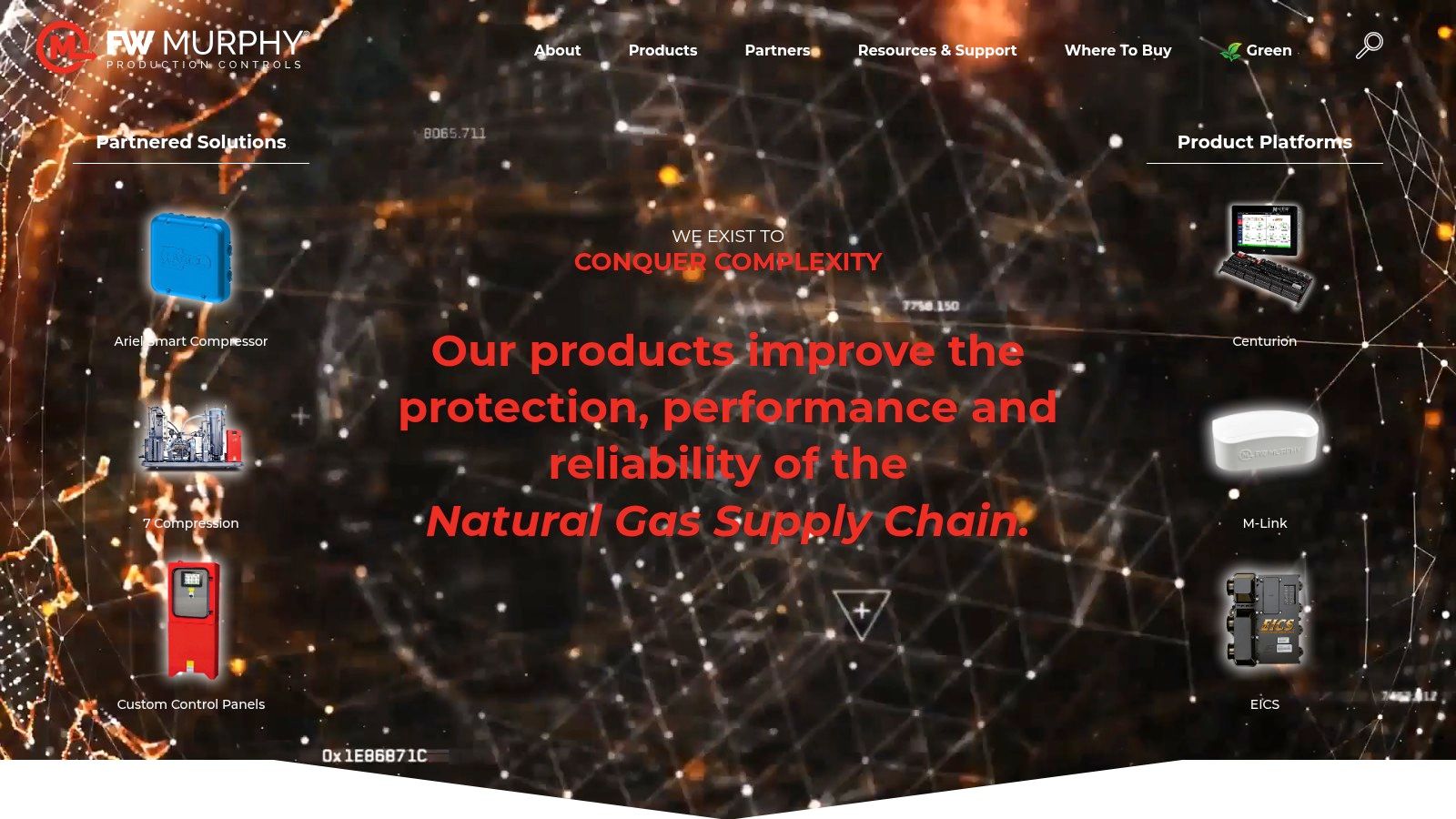
The PowerView PV411 boasts a bright, color touchscreen interface, making it intuitive to navigate and configure. This user-friendly design is a significant advantage over traditional analog marine fuel gauges or simpler digital displays. The touchscreen allows for customizable display configurations, enabling users to prioritize the information most relevant to their needs. For instance, a recreational boater might prioritize fuel level and range, while a commercial fishing vessel captain might focus on fuel consumption rates across multiple engines.
One of the standout features of the PV411 is its multi-tank and multi-engine monitoring capability. For vessels with complex fuel systems, this feature is invaluable. Imagine a large yacht with multiple fuel tanks supplying different engines; the PV411 can monitor and display fuel levels in each tank individually, as well as the overall fuel status. This granular level of detail allows for optimized fuel management and prevents unexpected fuel shortages. Similarly, for vessels with multiple engines, the system tracks fuel consumption for each engine, aiding in performance analysis and maintenance scheduling.
The PV411's comprehensive alarm and alert system is another crucial aspect of its advanced functionality. It can be configured to trigger alarms for low fuel levels, excessive fuel consumption, or other critical fuel-related events. These alerts can be visual or audible, ensuring that potential issues are immediately brought to the operator's attention, preventing costly downtime or dangerous situations. This proactive approach to fuel management sets the PV411 apart from basic marine fuel gauges that only provide a passive reading of fuel levels.
The system is built with rugged marine-grade construction, designed to withstand the harsh conditions encountered at sea. This robust design ensures reliable performance in environments with exposure to saltwater, vibration, and temperature fluctuations. While the manufacturer's website (https://www.fwmurphy.com) doesn’t list specific pricing, expect a higher price point compared to basic marine fuel gauges, reflecting its premium features and robust construction. This investment is justifiable for commercial applications where reliability and comprehensive data are essential.
While the PowerView PV411 is a powerful tool, it’s worth considering its suitability for different applications. For a small recreational boat with a single fuel tank and engine, the PV411’s advanced capabilities might be overkill. Simpler, more cost-effective marine fuel gauges might suffice in such cases. Furthermore, the system requires professional installation and setup due to its complex integration with the vessel's fuel system and engines. This adds to the overall cost and necessitates expertise beyond the scope of a typical DIY boat owner. However, for professional or complex applications, the benefits of its comprehensive monitoring, robust construction, and user-friendly interface outweigh the higher price point and installation requirements.
Implementing the PV411 effectively requires careful planning and professional installation. Consult with a qualified marine electrician or technician experienced with Murphy products. Discuss your specific vessel's requirements and fuel system configuration to determine the optimal setup and ensure proper integration. This professional guidance will ensure the system is installed correctly and configured to meet your specific needs. This upfront investment in professional installation will pay dividends in the long run by ensuring reliable operation and maximizing the system's capabilities.
Marine Fuel Gauges: Feature Comparison
| Product | Core Features ✨ | User Experience ★★★★☆ | Value Proposition 💰 | Target Audience 👥 | Unique Selling Points 🏆 |
|---|---|---|---|---|---|
| Garmin GMI 20 | 4" color LCD, NMEA 2000, customizable alarms | Durable, sunlight-readable, customizable | Higher price; premium integration | Tech-savvy boaters & Garmin users | Seamless Garmin ecosystem integration |
| Lowrance Elite Fuel Flow System | Real-time fuel + GPS, NMEA 2000, multi-tank | User-friendly, GPS-enabled | Higher cost, multi-function | Recreational & commercial users | Combines fuel monitoring with navigation |
| Maretron FFM100 | High-precision, dual engines, NMEA 2000 | Professional-grade, software integration | Premium price | Commercial vessels & pros | Extremely accurate; commercial-grade reliability |
| Raymarine i70s | Large color LCD, SeaTalkng/NMEA 2000, IPX7 | Intuitive, versatile display options | Good value for multi-function | Power & sailboat owners | Custom layouts, rotary dial control |
| Simrad IS42 | High-contrast display, NMEA 2000 | Clear, compact, reliable | Affordable but basic features | Small vessel owners | Compact size, clear basic fuel data |
| Floscan Series 200 | Flow sensor included, real-time data | Simple install, reliable | Mid-high cost, standalone system | Gasoline & diesel engine users | Self-contained complete system |
| Murphy PowerView PV411 | Touchscreen, multi-tank/engine, alarms | Rugged, user-friendly touchscreen | Premium price, professional install | Commercial & heavy users | Comprehensive alerts; rugged marine-grade build |
Smooth Sailing with the Right Fuel Gauge
Choosing the right marine fuel gauge is crucial for a safe and enjoyable boating experience. From the basic functionality of the Simrad IS42 Fuel Display to the advanced data offered by the Garmin GMI 20 or the fuel efficiency insights from systems like the Lowrance Elite Fuel Flow and Floscan Series 200, there's a marine fuel gauge solution for every vessel and budget. We've explored top options like the Maretron FFM100, Raymarine i70s, and Murphy Marine PowerView PV411, each offering unique features to enhance your time on the water. Consider your specific needs, vessel type, and desired level of information when selecting your ideal system. Factors like accuracy, ease of installation, and integration with existing electronics should all play a role in your decision.
A reliable marine fuel gauge is more than just a tool; it's an investment in peace of mind. By accurately monitoring your fuel levels, you can avoid unexpected emergencies, optimize fuel efficiency, and focus on what truly matters: enjoying your time on the water.
Ready to take your fueling experience to the next level? Pair your new marine fuel gauge with CLiX Fueling Solutions for the ultimate in safe, spill-free, and efficient fueling. Visit CLiX Fueling Solutions and discover how CLiX can simplify your fueling process and protect our waterways.


